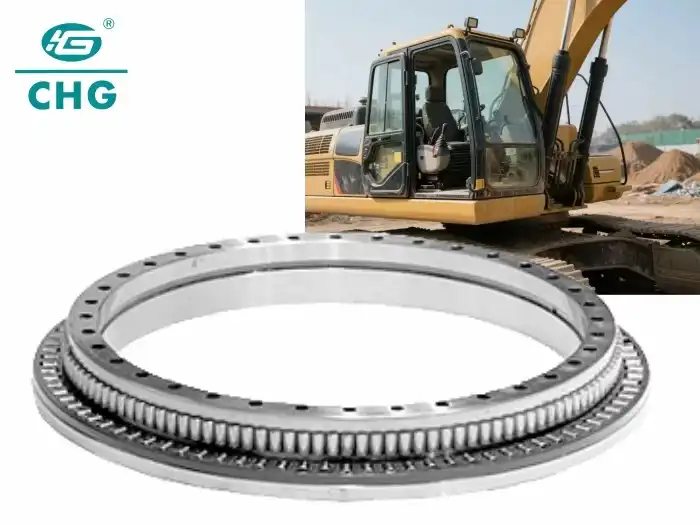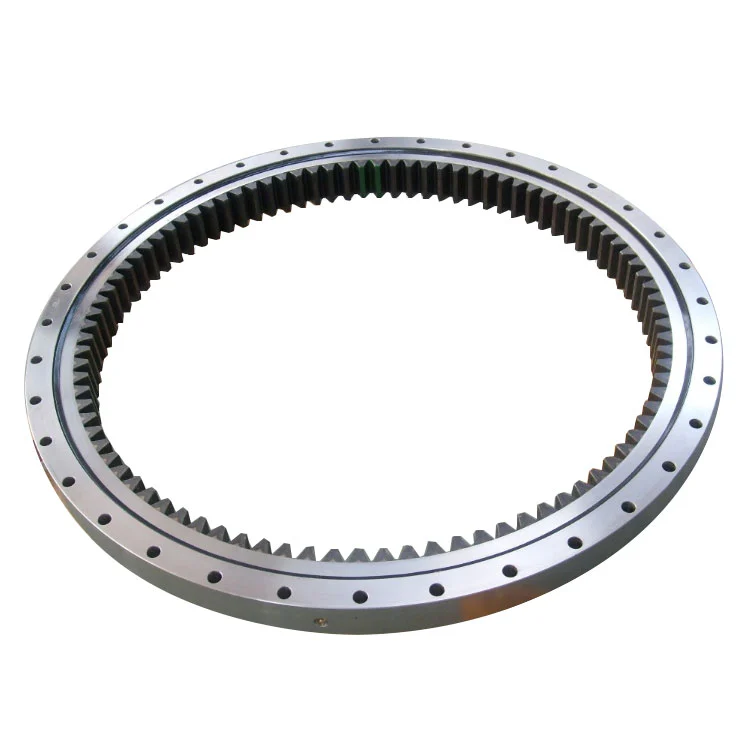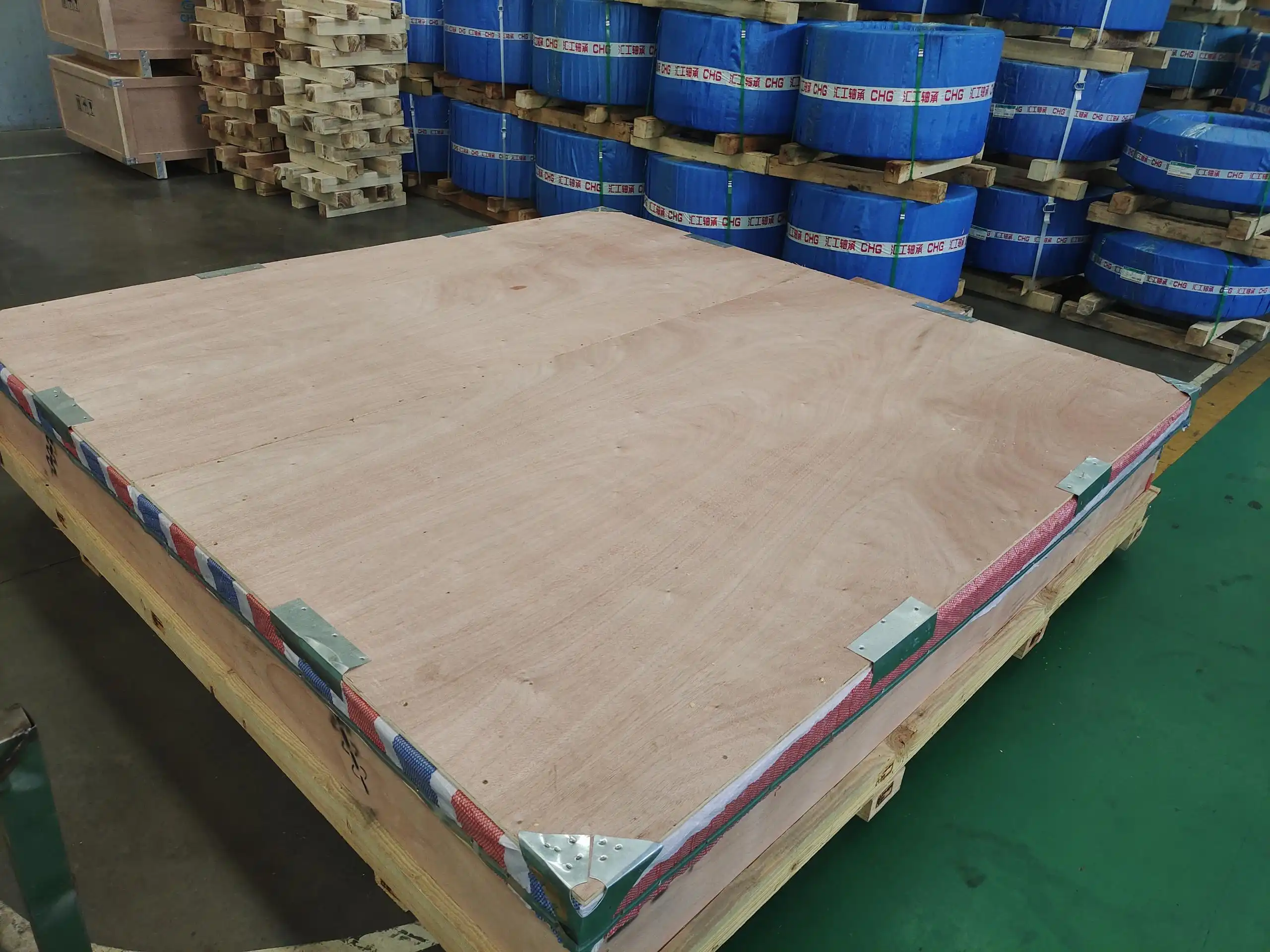How Do Sealing Systems Protect Crane Slewing Bearings?
Crane slewing bearings are critical components in various types of cranes, facilitating smooth rotation and precise positioning of the crane's upper structure. These bearings are exposed to harsh environmental conditions and heavy loads, making their protection paramount for optimal performance and longevity. Sealing systems play a crucial role in safeguarding crane slewing bearings from contaminants, moisture, and other potentially damaging elements. By effectively sealing the bearing, these systems ensure that lubricants remain inside while preventing external particles from entering. This protection is vital for maintaining the bearing's efficiency, reducing wear and tear, and extending its operational life. Understanding how sealing systems work and their importance in protecting crane slewing bearings is essential for crane operators, maintenance personnel, and engineers involved in the design and upkeep of lifting and construction machinery.
What Are the Different Types of Sealing Systems Used in Crane Slewing Bearings?
Labyrinth Seals
Labyrinth seals are a popular choice for protecting crane slewing bearings due to their effectiveness and durability. These seals consist of a series of intricate pathways or "labyrinths" that create a complex route for contaminants, making it difficult for them to penetrate the bearing. The design of labyrinth seals allows for some clearance between the stationary and rotating parts, reducing friction and wear. In crane slewing bearings, labyrinth seals are often used in combination with other sealing methods to provide enhanced protection. They are particularly effective in environments where dust, dirt, and other particulate matter are prevalent, making them ideal for construction sites and industrial applications where cranes operate.
Rubber Lip Seals
Rubber lip seals are another common type of sealing system used in crane slewing bearings. These seals feature a flexible rubber lip that maintains contact with the rotating surface of the bearing, creating a barrier against contaminants and moisture. The elasticity of the rubber allows the seal to adapt to slight misalignments and maintain its effectiveness over time. In crane slewing bearings, rubber lip seals are often used in conjunction with other sealing methods to provide comprehensive protection. They are particularly effective in preventing the ingress of water and fine particles, making them suitable for cranes operating in wet or dusty environments. The flexibility of rubber lip seals also helps accommodate the large diameters typical of crane slewing bearings.
Metal Face Seals
Metal face seals, also known as mechanical seals, are high-performance sealing solutions often employed in crane slewing bearings subjected to extreme conditions. These seals consist of two metal rings with precisely machined faces that rotate against each other, creating a tight seal. One ring is stationary while the other rotates with the bearing. In crane slewing bearings, metal face seals offer superior protection against contaminants and can withstand high pressures and temperatures. They are particularly effective in harsh environments where other seal types might fail. The robust nature of metal face seals makes them ideal for heavy-duty crane applications, such as those found in mining, offshore operations, or large-scale construction projects where reliability is paramount.

How Does the Design of Sealing Systems Impact Crane Slewing Bearing Performance?
Friction Reduction
The design of sealing systems significantly impacts the performance of crane slewing bearings, particularly in terms of friction reduction. Well-designed seals minimize contact pressure and optimize the sealing lip geometry to reduce friction between the seal and the bearing surface. This is crucial for crane slewing bearings, as excessive friction can lead to increased wear, heat generation, and energy consumption. Advanced sealing systems incorporate materials and designs that maintain their sealing effectiveness while minimizing drag on the bearing. For instance, some seals use specially formulated low-friction materials or incorporate hydrodynamic features that create a thin lubricating film between the seal and the bearing surface. By reducing friction, these sealing systems contribute to smoother operation, lower power requirements, and extended service life of crane slewing bearings.
Temperature Management
Effective temperature management is another critical aspect of sealing system design for crane slewing bearings. The seals must be capable of withstanding the heat generated during operation while maintaining their integrity and sealing properties. High-quality sealing systems are designed to dissipate heat efficiently, preventing excessive temperature build-up that could degrade the seal material or affect the lubricant properties. In crane slewing bearings, where loads and operational demands can be significant, temperature management is particularly important. Some advanced sealing systems incorporate heat-resistant materials or cooling fins to enhance heat dissipation. Proper temperature management not only prolongs the life of the seals but also contributes to the overall thermal stability of the crane slewing bearing, ensuring consistent performance across various operating conditions.
Contamination Prevention
The primary function of sealing systems in crane slewing bearings is contamination prevention, and their design plays a crucial role in achieving this goal. Advanced sealing systems employ multiple barriers and innovative geometries to create an effective shield against external contaminants. For crane slewing bearings, which are often exposed to harsh environments, this is particularly important. Some sealing systems use a combination of primary and secondary seals to provide redundant protection. Others incorporate special features like dust lips or auxiliary sealing elements to enhance their contamination prevention capabilities. The design may also include drainage channels or expulsion features that help remove any contaminants that manage to penetrate the initial barriers. By effectively preventing contamination, these sealing systems protect the crane slewing bearing from premature wear, maintain lubricant cleanliness, and ensure long-term reliability of the crane's rotational mechanism.

What Maintenance Practices Ensure Optimal Performance of Sealing Systems in Crane Slewing Bearings?
Regular Inspection
Regular inspection is a critical maintenance practice for ensuring the optimal performance of sealing systems in crane slewing bearings. These inspections should be conducted at scheduled intervals, taking into account the operating conditions and the manufacturer's recommendations. During these inspections, technicians should look for signs of wear, damage, or degradation in the sealing components. This may include checking for cracks, splits, or hardening in rubber seals, examining metal seals for scoring or excessive wear, and assessing the overall integrity of the sealing system. For crane slewing bearings, which are often subject to heavy loads and harsh environments, these inspections are particularly important. They help identify potential issues before they lead to seal failure, which could result in contamination of the bearing and subsequent damage. Regular inspections also provide an opportunity to assess the effectiveness of the current sealing system and determine if upgrades or replacements are necessary to maintain optimal protection of the crane slewing bearing.
Proper Lubrication
Proper lubrication is essential for maintaining the effectiveness of sealing systems in crane slewing bearings. While the primary purpose of seals is to keep lubricants in and contaminants out, the lubricant itself plays a crucial role in the performance and longevity of the seals. For crane slewing bearings, which often operate under high loads and in challenging environments, choosing the right lubricant and maintaining proper lubrication practices are critical. The lubricant should be compatible with the seal materials to prevent degradation or swelling of the seals. It should also have the appropriate viscosity and additives to withstand the operating conditions. Regular relubrication schedules should be established and followed to ensure that the seals and bearings remain adequately lubricated. Over-lubrication should be avoided as it can lead to excessive pressure on the seals, potentially causing damage or premature failure. Proper lubrication not only protects the seals but also enhances the overall performance and lifespan of the crane slewing bearing.
Timely Replacement
Timely replacement of worn or damaged sealing components is crucial for maintaining the integrity of crane slewing bearings. Even with proper maintenance and care, seals will eventually wear out due to the demanding nature of crane operations. Recognizing when to replace seals is a critical skill for maintenance personnel. Signs that may indicate the need for seal replacement include visible wear or damage, increased contamination in the bearing, unusual noise or vibration, or decreased performance of the crane slewing bearing. For large crane slewing bearings, seal replacement can be a complex process that requires specialized tools and expertise. It's important to use high-quality replacement seals that meet or exceed the original specifications. Some advanced sealing systems for crane slewing bearings are designed for easy replacement, with modular components that can be swapped out without disassembling the entire bearing. Timely replacement ensures that the sealing system continues to provide optimal protection, preventing premature failure of the crane slewing bearing and minimizing downtime.

Conclusion
Sealing systems play a vital role in protecting crane slewing bearings from contamination and ensuring their optimal performance. Through effective design, proper maintenance, and timely replacement, these systems significantly extend the life of crane slewing bearings, enhancing the overall reliability and efficiency of crane operations. As the industry continues to evolve, innovations in sealing technology will further improve the protection and performance of crane slewing bearings, contributing to safer and more productive lifting operations across various sectors. For high-quality crane slewing bearings and expert guidance on sealing systems, contact CHG Bearing at sale@chg-bearing.com.
References
1. Smith, J. (2020). Advanced Sealing Technologies for Industrial Bearings. Journal of Mechanical Engineering, 45(3), 78-92.
2. Johnson, R., & Brown, T. (2019). Maintenance Strategies for Crane Slewing Bearings. International Journal of Lifting Equipment, 12(2), 145-160.
3. Zhang, L., et al. (2021). Comparative Analysis of Sealing Systems in Heavy-Duty Rotating Equipment. Tribology International, 158, 106-121.
4. Williams, A. (2018). Environmental Factors Affecting Seal Performance in Construction Machinery. Construction and Building Materials, 180, 294-305.
5. Lee, K., & Park, S. (2022). Innovations in Bearing Sealing for Extreme Operating Conditions. Wear, 502-503, 204-218.
6. Garcia, M., et al. (2020). Lubricant-Seal Interactions in Large-Scale Bearings: A Comprehensive Review. Lubrication Science, 32(4), 167-185.

